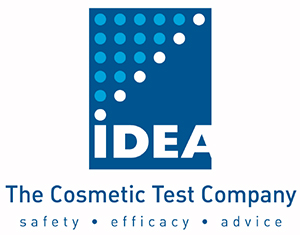• Why are we n°1 in solar evaluation?
Important capabilities strictly controlled: through 4 locations in Europe, our team of specialists is able to conduct a huge quantity of studies in a quality warranted environment (each location is ISO certified).
Some figures to give you an idea: 8 solar lamps, 3 jacuzzis, 4 000 volunteers, and more than 850 studies realized / year. That’s why we can offer you the best possible value for money.
• Our full solar offer
Clinical solar testing:
SPF
UVAPF
Water resistance
Sweat resistance
Sand resistance
According to the following protocols: COLIPA, FDA, JCIA, Australian /New-Zealand
In vitro solar testing:
• In vitro UVAPF (COLIPA)
• In vitro SPF
• Critical wavelength
• UVA:UVB ratios (Boots)
• Spectral photostability
Regulation:
• Cosmetic file setting up
• Regulation advice
Update: new international rules for suncare testing
The following article (written by Christophe COURBIERE) has been fully published in Expression Cosmétique n°12 (November / December 2011). Since its publication, the NF ISO 24442 standard “in vivo determination of UVA protection” has been published (February 2012).

Christophe COURBIERE
IDEA
Director of clinical efficacy studies
Evaluation and labelling: towards international harmonization ?
Resulting from the acceleration of collaborative approaches set up at an international level, methods used for the evaluation of the efficacy of sunscreen products are evolving, leading to the emergence of new texts. Overview of recent and upcoming changes in the EU, the United States and Australia, and their main impacts in terms of labelling.
Texts published in 2010/2011
• ISO Standard 24444: in vivo determination of the sun protection factor (SPF)
Published in November 2010, it derives largely from the international method of evaluation of SPF (CTFA South Africa, COLIPA, JCIA) of May 2006 that henceforth it replaces. The few minor changes concern in particular the revision of the acceptance range of SPF values for the reference standards (P2, P3, P7) (1) and a greater flexibility granted to investigators for the choice of the progression of UV doses.
• Colipa Guidelines: in vitro determination of UVA protection
First published in 2007, it was last updated in March 2011. The method consists in applying a thin layer of the product on plates of polymethyl methacrylate (PMMA) comprising a standardized rough side. The in vitro (UVA-PF in vitro) sun protection factor is determined by calculating the UV absorption data after an irradiation stage of samples in order to take into account photo-instability. This method was validated using the in vivo Japanese method of persistent pigmentation (PPD, Persistent Pigment Darkening). The S2 standard (2) is used as a reference. The determination of the critical wavelength (c) can be performed concomitantly.
This method will be replaced by the future ISO 24443 standard to be published soon, cf. below.
• FDA Monograph 21 CFR Parts 201 & 310 - Final Rule
Due to the significant changes made with regards to the previous 1999 version and in relation to proposals dating back to 2007, the new FDA monograph published in June 2011 may have surprised some people and even experts. The main changes are:
- Regarding the SPF:
• The number of required volunteers is halved, dropping from 20 to 10 volunteers;
• The minimum required subareas of exposure has dropped from 1 cm² to 0.5 cm², implicitly authorizing the use of Xenon Multiport® Solar Light simulators who are used quite often in Europe;
A single reference standard (P2 (²)) will now be used regardless of the SPF.
These changes being inspired by the international method of May 2006, the study conditions are therefore getting closer to those of the ISO 24444 standard.
- Concerning UVA protection, the in vivo determination method proposed in 2007 is abandoned and replaced by an in vitro test of the pass/fail type requiring a determination of the c. The “broad spectrum protection” indication on the label will be allowed (but not mandatory) if the c obtained is of at least 370 nm. To note: the quantities used and the irradiation dose being different from those
recommended in the Colipa method (and the future ISO 24443 standard), the c determination using one or the other method should be achieved with separate tests.
Compliance with the requirements of this new monograph has been set for June 18, 2012 for products with annual sales exceeding $ 25,000, and June 17, 2013 for other products.
Texts with a publication scheduled for 2012
• Drafts of ISO standards on the evaluation of the in vivo and in vitro UVA protection.
These drafts are being finalized and are at the FDIS stage (Final Draft International Standard). It should be noted that at this stage, no technical change can be made anymore, but texts can still be subject to editorial revisions.
- ISO/FDIS 24442: in vivo determination of UVA protection - To be published in March 2012
This standard is intended to replace the text of the JCIA method (Japan Cosmetic Industry Association) on which it is mainly based. The currently used JCIA method is based on the evaluation of persistent pigmentation - Persistent Pigment Darkening (PPD). The experimental conditions, although more detailed in the ISO/ FDIS 24442 draft, remain very similar to the JCIA method. The reference standard S1 (3) is still used, to which is added the standard S2 (2) for the UVA-PF products expected at ≥12.
- ISO / FDIS 24443: in vitro determination of UVA protection - To be published in the first half of 2012
This standard is intended to replace the Colipa’s UVA in vitro method. The experimental conditions are similar, however plans are made to perform the test on a larger number of PMMA (4 minimum instead of 3 minimum), and the conditions for the temperature maintaining of the samples before the initial measurements and during the exposure phase will be more restrictive.
- Revision of the Australia - New Zealand
Standard AS/NZS 2604:1998
This document which serves as a standard in these countries is still under review, but now closed to comments since July 18, 2011. The main focus of changes that should be made is driven by a desire to align with international practices:
- for the determination of the SPF: on the basis of the ISO 24444 standard (in vivo); labelling of SPFs and categories on the basis of the European Recommendation published in 2006;
- for the determination of the UVA protection: on the basis of the ISO 24443 standard with an in vitro UVA-PF at least equal to one third of the claimed SPF and a c of at least 370 nm, in support of the broad-spectrum protection claim. Hence, the criteria are identical to those used in Europe.
To note, therefore, for the UVA protection, the significant changes brought by this revision compared to the 1998 standard, both in terms of efficiency criteria and methodology.
Other draft standards under study
• Determination of water resistance (ISO/WD 16217)
This topic was ISO registered in April 2010 as a new project in the work program of the Working Group WG7 and no finalized document should therefore be released before 2013.
• What about the in vitro SPF?
This project is still registered as a Working Draft (ISO/WD 22245), and the expected date of publication is June 2013. However, some information suggests that this deadline could be postponed until the following year or even beyond. The use of the in vitro approach for the SPF as a constituent of the record of efficiency and to support the labelling is not relevant for the time being.
Application of these methods and major consequences in terms of labelling
- In Europe, the ISO 24444 standard for SPFs applies already, and for UVA protection, a choice is left between the in vivo approach (Japanese PPD method to become ISO 24442 standard in 2012) and the in vitro (Colipa method 2011 to become ISO 24443 standard). This will not affect the labelling which is guided by the European recommendation of September 22th, 2006.
- In the United States, the monograph of June 2011 entails labeling changes. For UVA protection, the “star” notation which had been proposed in 2007 has disappeared, and from now on will only be mentioned (if applicable) the broadspectrum protection indication preceding the SPF value (e.g. “Broad spectrum SPF 30”). In the case of water-resistant products, the information “very water resistant” has disappeared, and is replaced by an indication of duration, such as “water resistant (40 minutes).”
- In Australia, the date of publication of the revised standard AS/ NZS 2604, although scheduled for 2012, has not yet been confirmed. It will result in a reshaping of the labeling system on efficacy with a classification of solar products into 4 categories based on the SPF value, a list displaying SPFs which would be limited to 11 possible values, the minimum being SPF 4 and the maximum SPF 50+. For the UVA protection, expressed with the “broad spectrum” claim, it will be mandatory for both primary protection products (like sunbathing products) and secondary protection products (like daily photoprotection of make-up products as of SPF 30). It will be optional for cosmetics claiming an SPF < 30.
Ensure the quality of results
The implementation of these methods requires a technical expertise and a know-how that should be regularly checked, including by laboratories themselves. The reference standards systematically used are part of these controls. Among the additional actions that could be regularly conducted, the one proposed by the BIPEA (Bureau Interprofessionnel d’Etudes Analytiques, Gennevilliers - Interprofessional Office of Analytical Studies Gennevilliers, France) is particularly interesting. It consists in the organization of proficiency testing schemes (PTS), the participation taking place on a voluntary basis. These testing schemes help evaluate the quality of the results obtained by each of the participating laboratories. Since late 2009, two annual campaigns are organized for the SPF tests, and other testing schemes could be set up soon (in vivo and in vitro UVA-PF, water resistance).
Conclusion
The harmonization of international practices for the evaluation of the efficacy of sunscreen products appears to be clearly taking shape. However, convergences seem stronger for the evaluation of the SPF than for the UVA protection where in Europe it is possible to use the in vivo or the in vitro evaluation, while only the latter approach is adopted in Australia with the use of the future ISO standard, and the United States but with different technical aspects of the future ISO standard.
This harmonization in working order, supported by such initiatives as the organization of proficiency testing schemes, and despite the persistence of geographic particularities for criteria and efficiency labelling, are guarantees offered to the consumer who can safely and knowingly choose his solar products, even outside his country of residence.
- References:
P2 standard of average SPF 16.1 (Padimate-O: 7% - Oxybenzone 3%)
P3 Standard of average SPF 15.3 (Octinoxate: 3% - Avobenzone: 0.5% - Ensulizole: 2.78%)
P7 Standard of average SPF 4.4 (Homosalate: 8%) S2 standard of average UVA-PF 12.7 (Avobenzone: 5% - Octocrylene: 3% - Octinoxate 3% - Bemotrizinol: 2%).
S1 standard of average UVA-PF 4.4 (Avobenzone: 5% - Octinoxate 3%).

